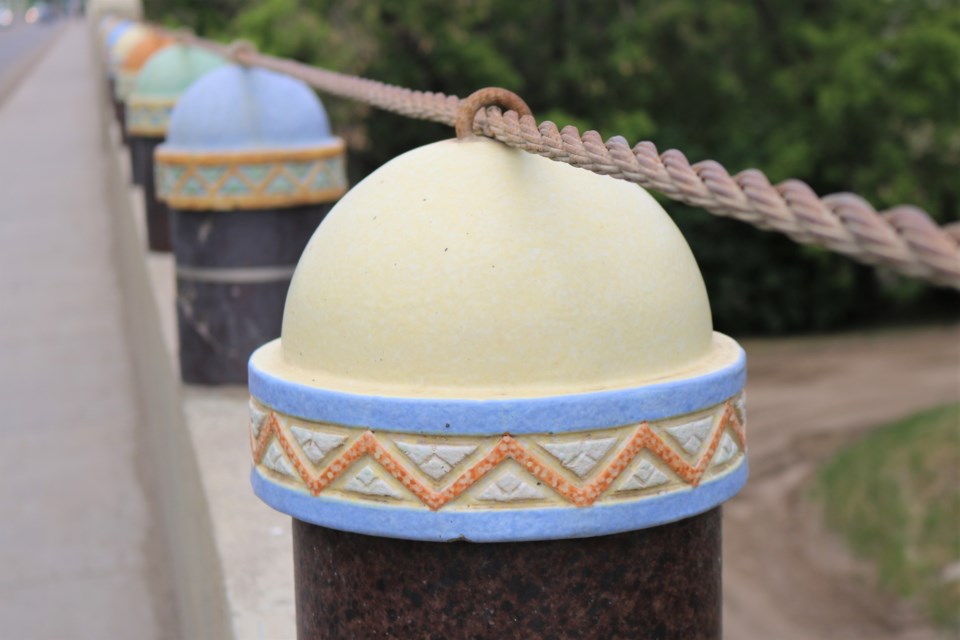City hall is looking for public input on how best to preserve the 91-year-old Fourth Avenue Bridge — also known as the Thunderbird Viaduct — considering it is a prominent historical structure.
The City of Moose Jaw has been working with Associated Engineering (AE) to develop a strategy for the Thunderbird Viaduct Rehabilitation project; it is currently in the preliminary design phase. AE conducted an assessment of the bridge in August, and with that completed, both parties are looking for feedback that could help inform how the upgraded bridge looks.
The City of Moose Jaw has a survey on its website for residents to answer. Once the survey closes on Wednesday, Oct. 21, city administration will take the information and produce a report in December for city council. The next phase would then be the development of a detailed design.
The Fourth Avenue Bridge is one of three structures that crosses over Thunder Creek and the Canadian Pacific Railway railyards. It is also the oldest, having been constructed in 1929 and then upgraded in 1965 and 1989. However, since the bridge’s load limit is 10 tons, heavy city vehicles and fire trucks cannot cross it.
Members of AE were recently at city hall to discuss the project and what they want from the public. Engineer Stephen Chaisson explained rehabilitation would include partial removal of the concrete deck and installing a new, thicker asphalt-concrete surface that could handle heavier loads.
“The asphalt is in deteriorated condition and needs to be replaced, and what materials testing showed us (in August) is that the upper portion of the concrete in the deck is obviously deteriorated from road salts … in the winter,” he said.
Other rehabilitation aspects would include replacing expansion joints, addressing drainage issues, replacing existing barriers with enhanced crash barriers, and upgrading both 1.5-metre-wide sidewalks or even combining them into a three-metre-wide path.
Besides the structural component, heritage retention is also an important aspect of this project.
“This structure has a rich history in the community. It’s a landmark in the community and it’s got a lot of really character-defining elements to it,” Chaisson said. “One of those character-defining elements is the actual construction and engineering of it.”
The bridge is essentially a flat slab of concrete laid across columns, which was unique for its time in 1929 since not many bridges like that were ever built, he continued. The architecture is also special, as it has terra cotta light posts and medallions on the columns.
The structure also has a strong connection with the area’s Aboriginal history, as those peoples used that path to cross from side to the other to hunt. The municipality gave the bridge the name of Thunderbird in 1952.
AE and the municipality have retained a heritage consultant to ensure those historical aspects are maintained and worked into the upgraded structure.
There are two options for how the construction would happen, explained Chaisson. One is to temporarily close the bridge, which would lower the cost, shorten the construction season, and reduce the risk to workers. Or, one lane of the bridge could be closed and traffic signals installed on either end of the bridge. So far, many people are in support of closing the bridge.
There has been plenty of solid feedback so far about this project, he added. Specifically, about 1,000 people — or three per cent of the population — have provided input, which is a significant number.
Visit moosejaw.ca to provide feedback on the project.




